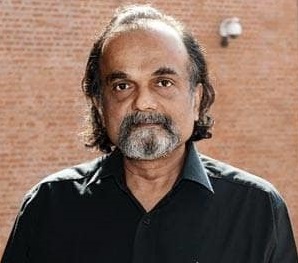The National Highways Authority of India (NHAI) now admits that the Golden Quadrilateral (GQ) completion is going to be delayed and the cost overrun would be substantial. What it is not admitting is that its poor management of tolls and of the highways is destroying much of the value that could have otherwise been realised out of the vast investments already made.
It used to take 14-16 hours to drive from Ahmedabad to Pune before the GQ. Even now it takes over 13 hours. With better management and maintenance it should not take more than 10 hours, even with all the trucks on this section which is one of India’s busiest and has also attracted much investment. Knock off the clear value addition by the Ahmedabad-Vadodara and the Panvel-Mumbai Expressway sections where one could ,maintain average speeds over 90 Kmph and the rest is a throw back to the patented Indian PWD roads that must have a pit every 100 yards. Indeed, the earlier section between Navsari and Dahisar just outside Mumbai which while much curved was well planned and maintained is now pitted – which makes trucks come on to the right lane to reduce the speed of cars. Similarly and to a much greater degree the section between Vadodara and Bharuch is almost completely pitted making driving at above 60 Kmph very risky. Some of the pits are as wide as two metres and as deep as 10 inches on ostensibly India’s most modern highway!
About signages, the less said the better. Correctly marked sections alternate with wrongly marked sections and sections with no signage at all, so that any unwary driver would most certainly have an accident. Toll collection points waste time and the approach to them can be dangerous with bumps that would break any axle and most do not even warn. There are over 80 accident points (sudden turns, lanes that lead to incoming lanes, unmarked huge boulders kept on the road by excise and Vat authorities to slow down traffic) that is more than one every 10 km! On an average about one in five km if the expressway sections are kept out. Driver stress is so heightened that it is impossible not to see an accident that happened about a hour ago at least once every 150 km. It is easy to blame the driver but then their atrocious behaviour has evolved in a Darwinian sense by the bad and senselessly managed roads. Thus even on the expressway sections especially the Panvel-Pune section, it is not uncommon to see three trucks abreast trying to overtake each other, and no authority –not even the police- seems to recognise the criminality of this behavior.
We paid tolls at over 12 points of amounts that ranged from Rs 5 to Rs 118 for the Panvel-Pune section. The toll amounts were 5, 13, 15, 20, 25, 25, 25, 25, 30,30,63,118 (not in sequence). One notices numbers like 13 and 63 which create immense problems for the traveler. Perhaps the NHAI still needs to understand the value of rounding off. In any case why so many tolling points? Can not offsets be created or shadow tolling be resorted to reduce the number of collection points. Some sections are tolled for roads yet to be built.
The value loss to the consumer on account of each tolling point is akin to the cost of driving an additional 5 km at the very least and if the need to overtake slow moving traffic is included probably equivalent to driving another 5 km. Thus a value loss equivalent to driving 50 Km takes place because at least 5 tolling points could have been easily avoided.
Similarly, the innumerable checkposts (and not just at state boundaries) remove value. Exit and entry points are either too ambitiously spaced out or too close and while the latter destroys speed, the former imposes large risks because the large distances invite users and others to drive on the wrong side.
Few sections have side or service roads, and the overbridges and underpasses provided are too inadequate so the GQuisation of the highways imposes very large cost on villagers living along these roads. Simple design changes and service roads could not only have removed their pain but also enhanced the value the people living along he road could have realised.
Similarly the “improved” roads do not go into the centre of urban places, Thus the Panvel-Pune section ends well outside both Pune and Mumbai to take way much of the value that this vast investment could have made to users traveling between the two cities.
About the Mumbai bypass from Dahisar to Panvel, the less said the better. It used to be like a lunar landscape – now a shade better, but not good enough to make travelers avoid coming into the great city to waste their time and worry mumbaikers. Indeed, with a good bypass the Ahmedabad-Pune section could have taken much of the load that currently goes on the Agra-Mumbai (AB) road.
Why does even a professional body like the NHAI so poorly manage its roads? One reason is it still does not see the road from the users point of view. It, like the PWD, is driven by process and tarsgets.
Another reason is it does not even recognise the need to coordinate with towns and villages, and umpteen other authorities.
http://www.financialexpress.com/fe_full_story.php?content_id=134310


